
This parent guide supports parents in helping their child at home with the 7th grade Science content.
- Subject:
- Science
- Material Type:
- Reference Material
- Vocabulary
- Author:
- Kelly Rawlston
- Letoria Lewis
- Date Added:
- 10/11/2022

This parent guide supports parents in helping their child at home with the 7th grade Science content.

This resource accompanies our Rethink 7th Grade Science course. It includes ideas for use, ways to support exceptional children, ways to extend learning, digital resources and tools, tips for supporting English Language Learners and students with visual and hearing impairments. There are also ideas for offline learning.

This is a hands-on project that uses George Orwell's novel, Animal Farm, as the touchstone text. Students work in groups to construct a functioning windmill that can generate electricity. Each student has a role based on the characters in the book. There are also segments of the project that focus on extracting key information from the text.
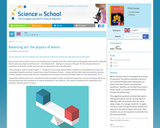
In this activity, students use their knowledge of levers to compete against another student in a simple game. Students will add wooden blocks or similar objects to a tray balanced on a pivot. By competing to keep the tray level, students will learn about the physics of levers.

Students learn about the physics behind how a bicycle works. In an associated activity, students find out how to bike more efficiently by calculating gear ratios.
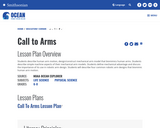
Students will design a robotic arm that could be attached to an underwater ROV to collect deep sea corals. In constructing the robotic arm, students will investigate the structure and range of motion of the human arm and how simple machines can be combined to mimic these movements. The lesson also reviews mechanical advantage. Students will work in collaborative groups and present their designs to the rest of the class.

Students will design a working trebuchet for maximum accuracy, distance and force using the engineering design process. Students will utilize the measurement formulas to calculate kinetic and potential energy and therefore create a trebuchet for a specific function (ex: hitting a target, knocking down a wall or launching for distance).

In this activity, students investigate the relationship between the two forces and the location of the fulcrum in a first class lever. Students work in coppoerative groups to make observations that they can then generate a formula for, determining the relationship between the force of effort, force of resistance, and location of the fulcrum.
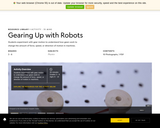
Students experiment with gear motion to understand how gears work to change the amount of force, speed, or direction of motion in machines.

In this STEM lesson, students follow the engineering design process to design and build a crane out of cardboard. They will determine methods to reinforce the crane's arms so it doesn't collapse under a heavy load. This activity is based on Robotics applications.

In this lesson, students participate in a guided discussion to direct them to think of complex machines that we use every day. They will also group machines into groups of similarities, identifying the six types of simple machines.

In this lesson, students will learn about the 5 simple machines and examine different rooms in their school to search for examples of those simple machines being used. They will create a presentation using a digital educational tool.

Students will explain what work is, measure work done in moving an object, and tells how energy is related to work in both machines and the human body.
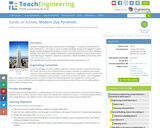
In this STEM lesson, students investigate the ways in which ancient technologies — six types of simple machines and combinations — are used to construct modern buildings. As they work together to solve a design problem (designing and building a modern structure), they brainstorm ideas, decide on a design, and submit it to a design review before acquiring materials to create it (in this case, a mural depicting it). Emphasis is placed on cooperative, creative teamwork and the steps of the engineering design process.
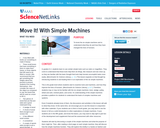
Students learn about the six simple machines and understand what they each do and how they are helpful.

This is the educator's guide for a set of activities that teach students about humans' endeavors to return to the moon. The emphasis is for students to understand that engineers must "imagine and plan" before they begin to build and experiment. Each activity features objectives, a list of materials, educator information, procedures, and student worksheets. Students should work in teams to complete the activities. Note: Activities do not align to all objectives that are listed; specific activities align to specific objectives.

Learners will design a combined machine to eliminate one chore they may dislike. Once learners work through the engineering design process, they will share their prototype locally.

The purpose of this experiment is to show students that pulleys are made of at least two wheels with groves for holding a rope or cable. By using the pulley that they have constructed, students will see first-hand how a pulley makes work easier by lessening the force needed to lift or move a load. Finally, as a review of previous lessons on simple machines, students will be able to match examples of all the simple machines to their correct category.
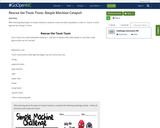
After learning about types of simple machines, students create one with recyclables in order to 'rescue' a small figurine by moving it 10 feet.

This course was created by the Rethink Education Content Development Team. This course is aligned to the NC Standards for 7th Grade Science.